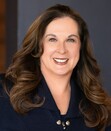Diane M. Simard's Blog, page 5
February 1, 2022
Show Me the Love
My immediate family didn’t start giving each other hugs or saying “I love you” until I was an adult, not long before both my parents passed away.
It wasn’t that we didn’t like each other. Displays of affection were not part of the DNA of everyday life where I was raised in central Nebraska. The weather was swelteringly hot and humid or bitingly cold and damp. No one ever dared slow down long enough to enjoy a hot cup of coffee on the porch as the sun came up. Everything evolved around work, which usually had something to do with agriculture.
For example, the Moravec/Faaborg household (mine) didn’t have indoor pets, and neither did most of our neighbors. Most dogs stayed outside to protect property or livestock, and cats—some of which were just as bad-ass as the dogs—needed to stay outside to keep the rodent population in check.
Everything and everyone had a purpose, which had something to do with eking out a living. Crops were planted in the spring, then in the summer it was time for irrigating, playing softball and drinking beer. In the fall you hopefully collected a harvest paycheck that covered all the expenses, then frigid, slippery winters were spent fixing everything that got broken during the year. It was a tough and usually non-glamourous life focused on minimal amounts of sleep and endless work.
Thankfully, though, I always felt loved, despite the rare displays of affection. Since we are heading in to the “love month” of February, let me reflect on the memorable moments in my formative years when others went out of their way to help, support, and offer me encouragement, which were stand-ins for hugs and I love yous.
A Trip Back in Time
Since my mother worked as a music teacher, most of my memories before starting kindergarten are of being babysat by my paternal grandparents, grandpa and grandma Moravec. They lived in Cotesfield (Nebraska), too, and were full-blooded Czechs who spoke sparingly and showed me how to live off the land.
Grandpa Moravec was quiet like my dad, wore Lee jean overalls, chewed Red Man tobacco and had a pocket watch attached to one of the overall straps near his chest. He never said much, and he usually sat with his legs crossed in a chair in the kitchen near the wall heater. In the summers when grandma and grandpa babysat me while mom was going to summer school to renew her teaching certificate, he would sit motionless in his recliner chair in the living room, watching baseball for hours. I remember playing in the corner of their living room and thinking I ought to go over and ask him, “Are you dead, grandpa?”
Uncle Frankie Moravec
However, big fun was had when grandma and grandpa propped me up between them on the bench seat of their 1968 International Scout pickup and made the drive out to my dad’s younger brother’s, Uncle Frankie’s, farm. Uncle Frankie was the human equivalent of a keg party. He did all the cool stuff like smoked a pipe, he told jokes, and he generally tried to see what crazy antics he could get away with.


For example, one Sunday afternoon in the late 1960s when the Moravec aunts, uncles and cousins were gathered at grandma and grandpa’s house, Uncle Frankie wondered what would happen if he dumped popcorn kernels down the barrel of my late great grandpa Moravec’s double-barrel muzzle loading shotgun. After pouring black powder down the barrel, he stuffed down a torn corner piece of paper towel, followed by a handful of popcorn kernels. Sure enough, when he fired the 70+year-old gun, it shot out some blackened kernels of popcorn, and all of us cousins laughed hysterically, thinking he was the coolest uncle or dad who had ever lived.
Uncle Frankie even had a special name for me in my pre-kindergarten days: Diane-ee. He was complete, uncensored, goofball fun, and I adored him. He made me feel loved.
A Big Brother’s Love
Then there was the time when I was about 9 when I got caught in a late afternoon hailstorm while walking on my paper route, delivering the Grand Island Daily Independent newspaper to my 16 or so customers in Cotesfield. Thankfully, I was able to make it to grandma’s house once hail started falling.
After the brief storm, I got back to work, walking down muddy gravel streets still covered with hail stones and tree leaves. A few minutes later, my oldest brother, Randy, and his girlfriend pulled up in his car to ask if I was okay.
“I was afraid you had gotten caught out in the storm, so we came looking for you,” he said. “Do you need a ride?”
“Nope,” I said. “I made it to grandma’s house just in time, so I’m okay.”
Wow, I thought to myself as I continued walking and straightened the newspapers straddling under my left arm. He came to see if I was alright. No one has ever done that before. Usually, I was on my own in those types of situations.
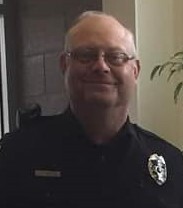
That kind gesture was a symbol of my big brother’s love, and Randy continues to have the same concern for my well-being even today. I am truly blessed.
Giddy-up
My final show-me-the-love story involves a runaway pony. On a particularly young and dumb day at age 7, I climbed up on the saddle atop a farm pony my sister, Marilyn, had ridden into Cotesfield to give rides to the Moravec cousins. When she grabbed and threw the reins over the volleyball net post that was keeping the horse tethered, the pony took off at top speed with me holding on to the saddle horn, shrieking. The frightened pony ran for four blocks as I screamed, then he abruptly stopped in a freshly-cut alfalfa field to graze.
I was so hysterical I decided it was best to fall off instead of properly dismounting, in case the pony decided to take off again. So, I fell to the ground, splat into alfalfa stalks that felt like a bed of prickly nails. A few moments later I rose to my feet, dazed, as a slew of Moravecs sitting in the bed of Uncle Frankie’s pickup arrived to rescue me.
Although I was bewildered and embarrassed, thankfully I had no broken bones. Grandma gave me the once-over after we arrived back at her house and I received the all-clear. But I felt the love and attention of a pickup-full of aunts, uncles and cousins who were concerned about my well-being. And given where I was at emotionally at the time, it was a really big deal.
February is not just for romantic love anymore.
AAAAAnd We’re Off
Last month I mentioned I’m taking myself on as a project in 2022, discovering, packaging and eventually shouting out to the world what I am. But most important, why I am.
One of my favorite exercises in Kami Guildner’s Marketing Mastery Course I’m taking was to ponder this question: If your brand was an animal, what would it be?
While I hoped I would end up as my favorite dog breed, Labrador retriever, I opted for an animal that illustrates my primary archetype. Swiss psychologist Carl Jung (1875 – 1961) described “archetypes” as the recurring patterns found in our stories that are passed down through history via our genes. Fascinating.
Anyway, my profile indicated my primary archetype is revolutionary. Here’s what my profile had to say about me:
Unless you are asleep, your mind is prodding you with ways to “revolutionize” whatever is around you at the time. It nags you with, “How can I make this better?” You see everything—maybe not as it should be—but as you think it should be.
Bingo. Case in point, I had to start something impactful—COPE—to get past cancer, and become a psycho-oncology advocate to truly begin to understand my whys.
When it came time to illustrate my brand as an animal, I chose bald eagle. Here’s why:
Eagles are able to soar to heights higher than most birds. It is said that crows are the only birds that dare spar with an eagle, usually over territorial disputes. Crows will sit atop the back of an eagle and peck at their necks, but eagles typically don’t fight back. They simply fly higher until the crows run out of oxygen and drop off.Eagles look closely at the most minute details, then widen their aperture to view life from a broader perspective.They maintain their balance in all dimensions.They build durable nests and renovate them every year. (Some of you have heard me say our house is like the Golden Gate Bridge, which is perpetually being repainted).Eagles are strong, courageous, intelligent, and purposeful.They are our nation’s symbol of freedom.
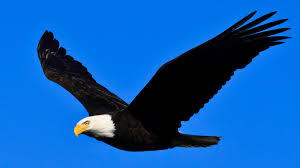
Awaken to the Possibilities
In closing, my sincere thanks to Sandy Neves, Bob Johns, Ellen DuPont, Stephanie Bennett, Colleen Hansen, and Lynn Myers for providing feedback to my 360 profile request. You are all faithful readers of this column, and I am eternally grateful for your friendship and your willingness to share feedback about how I continue to evolve. I have learned much from each of you, and I look forward to learning more.

Sending you heartfelt love and gratitude,

January 3, 2022
Good Riddance, 2021
New year, new you.
Time to start fresh.
The dawn of a new day.
Oh, you annoying clichés. I realize you can’t help it—it’s early January and all.
Yes, another new year. There were some peak moments in 2021, but in my rolodex of memories I filed last year as THE HEARTBREAKING YEAR AFTER COVID STRUCK. With the spike in violent crime, ongoing draught, and resulting wildfire devastation, many seemed to have had more than their share of challenges. Yet, I believe we are far from defeated thanks to resilience, optimism, and the will to keep moving forward.2022? This one definitely has possibilities. Let’s launch.
Time to Get Positive
First off, I recently came across this quote from Rita Schiano, a resilience strategist, coach and speaker:
“Talking about our problems is our greatest addiction. Break the habit. Talk about your joys.”
Whoa. The word “addiction” evokes some strong emotions. My first thought is loss of control, which for me is a terrifying concept.
As far as joys, consider this line from one of the verses of the Christmas hymn, Joy to the World:
“Repeat the sounding joy.”
Followed by the irony that the line is repeated twice. Brilliant.
Just how does one go about focusing on joys, not problems? Is it attitude? Mind over matter? I have experienced a career of watching business problems expand that never fixed themselves. In the end, those impacted lost money, got hurt or sick, were forced into bankruptcy, they lost friends, colleagues, or significant others, and some eventually gave up or were forced to give up.

I have also witnessed business leaders who refused to give up and spent the better part of their work lives struggling, hoping, and waiting for their big break. Which was either admirable or irrational, depending on the ultimate outcome. I don’t fault any of them—who am I to judge what’s right or wrong about how someone else makes a living?
But joy. The people who live their joy are the ones I seek. The confident, even-keel heroes in my life who ask, “How are YOU doing?” at the beginning of a conversation. Their attitudes are positive, their outlooks are sunny, and they don’t criticize for the sake of whining to bring themselves temporary relief.
Here’s a healing thought for those struggling with negativity or challenges—it’s one of my “recitations of faith” from a future something I’m writing. Book, planner…oh wait, I intend to figure all that out this year.

Grieve, pout, and cry as much as you need.
Then celebrate, sing, and pirouette for just as long.
Pause, release the stress, and reflect.
Fill your being with gratitude, take a deep life breath,
and begin.
-Diane M. Simard
What I’ll Be Up To in 2022
In early December, I made the historic decision to focus on a comprehensive rebrand. To integrate the what-all-I-dos (aerospace exec, board member, psycho-oncology advocate, writer, podcast guest, speaker and all that) into a cohesive message and life plan.
I believe in a disciplined process of change, and 2022 will be the year I take myself on as a project. A heartfelt thanks to several of you whom I have already asked for feedback for an early exercise in a year-long Mastermind class that will be the foundational basis for my rebrand.

Hail and Farewell
Time again for my annual reflection and remembrance of those who passed away this past year. Rene and I said goodbye to two dear friends, Chris Westin and Leonard Williams, who dealt with significant health challenges they faced with grit and determination. Our heartfelt sympathies to their families and loved ones.
Then there’s the long list of public figures we lost in 2021 who I didn’t know personally but they had an effect or will forever spark a memory. There are many more who deserve recognition, but here’s a select few. Here we go:
Bob Dole
Politics aside, he was a statesman and decorated WWII veteran who led with passion and distinction.
Willie Garson
Stanford Blatch was my favorite character on Sex and the City. His comedic timing and delivery were hilarious magic.
Don Everly
The Everly Brothers’ greatest hits was one of my first 8-track tapes.
Olympia Dukakis
She was impeccably cast as Clairee in Steel Magnolias. My favorite line from Clairee: “Ouiser, you sound almost chipper. What happened today—you run over a small child or somethin’?
Jim Steinman
This songwriter will be remembered for writing Meat Loaf’s Bat Out of Hell debut album, which was based on his science-fiction stage musical. Oh, and he also wrote and produced Total Eclipse of the Heart, a “gothic rock” hit for Bonnie Tyler released in 1983.
B.J. Thomas
Raindrops Keep Fallin’ on My Head. The first American No. 1 hit of the 1970s as it topped the Billboard Hot 100 for four weeks in January 1970. My mom sang it, I sang it as a 4-year-old, and it was one of Rene’s mother’s favorite songs, too.
G. Gordon Liddy
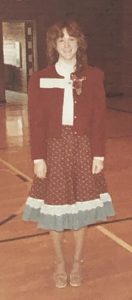 Former FBI agent and mastermind behind the Watergate scandal. He was ultimately the reason my summer of 1973 was ruined. Read all about it here: https://www.dianemsimard.com/the-year-president-nixon-ruined-my-summer/
Former FBI agent and mastermind behind the Watergate scandal. He was ultimately the reason my summer of 1973 was ruined. Read all about it here: https://www.dianemsimard.com/the-year-president-nixon-ruined-my-summer/
Jessica McClintock
Fashion designer whose clothing line, Gunne Sax, was to blame for all the flowers and lace on prairie skirt outfits for girls and women (including me!) in the early 1980s.
Chick Corea
I have several albums of this jazz pianist and composer in my music library. He was a member of Miles Davis’ band in the late 1960s and is heralded as one of the founders of jazz fusion. Mesmerizing.
Cicely Tyson
In 1974, CBS broadcast the film adaptation of the fiction novel, The Autobiography of Miss Jane Pittman. Cicely Tyson was cast as Jane Pittman and narrated/portrayed the major events of Jane Pittman’s life as a slave girl in the American south at the end of the Civil War who lived to be over 100. I was 9 at the time, and the film was my first visual exposure to the struggles of slavery and ongoing discrimination. Her performance both frightened and enthralled me, and this masterpiece remains one of the most impactful films of my life.
Les McKeown
Former lead vocalist for the Bay City Rollers, whose roots are in Scotland. At the peak of their popularity in the mid-1970s, they wore calf-length tartan trousers and tartan scarves. Their songs all sounded the same, but that was okay.
Hail and farewell to these leaders, influencers, and gifted artists. I am grateful for all the memories you created.
Watch How COPE Got its Start

Don’t miss out on what might be your only opportunity to watch Courageous Warriors: Beauty from the Ashes, and it happens February 24, 2022, at 7 p.m. Mountain time via streaming on e360tv.com. This is an award-winning independent film documentary produced by that features the stories of breast cancer survivors who channeled their experience to make a difference. Yours truly is in the film, plus it features the COPE story and why I believe psycho-oncology must be addressed as part of cancer care.
Go to https://tinyurl.com/courageouswarriorsmovie to sign up, and please indicate “Ray of Hope” as the organization you would like to support (50% of the price of your ticket(s) will go to Ray of Hope). Thank you!
In closing, I didn’t hate 2021 but I’m glad it’s over. It felt stale and lifeless.
It’s time for me to get to work and create more memories.
Here’s to big changes ahead!

December 7, 2021
Supply Chain Chaos, Holiday Bests and More COPE Impact
-Jane Kotsiopulos, Survivor
Now that we are in full-on holiday 2021 mode, a few weeks ago it was looking like those who didn’t start placing orders with Santa in March were going to be putting IOUs under the tree this year. Now I’m hearing the supplier bottleneck logjam is breaking free. Yeah, we’ll see.
Seriously, Rene ordered a gallon of paint for our plant room around Labor Day (the walls are a celery green color), and he canceled the order on November 7. Apparently, there’s no eggshell white base paint to be found across these Rocky Mountains. Our plant room wall situation is not a catastrophe by any means. However, I can’t imagine how frustrated those who make a living relying on oh, I don’t know, paint, nails, lumber, glass and other home fixer-upper stuff, have been feeling these past months.
I have to question the rationale and truth behind how all the supplier shortage talk has played out, though. On November 15 I read in one of my morning e-newsletters that holiday gifts would be in short supply, shelves would be bare, and we would be stringing popcorn instead of buying garland for this year’s trees. Four days later, I read a Wall Street Journal article proclaiming how some car manufacturers in Japan had already put production lines back up to 100% output, one of the LA-area shipping ports had decreased the number of ships waiting to unload by 25%, Target would have plenty of Little Live Scruff-A-Luvs Cutie Cuts to sell, and so on. Who and what do you believe?
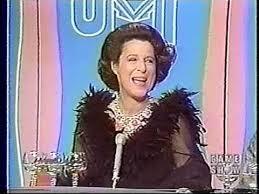
Who’s Telling the Truth?
I had a flashback to the early 1970s version of the game show, To Tell the Truth, where three individuals tried to convince the panel of famous celebrities (?) that they were the same person. I always thought the other two individuals did a better job being the person they weren’t. Remember Kitty Carlisle’s feathery, furry formal dresses? Anyway, all this supply chain talk of “all is well” and $3 avocadoes has made me skeptical of most everything I hear. Who’s telling the truth? What is truth anymore?
Staying on the topic of facts and reality, thanks also to the supply chain chaos and resultant semiconductor shortage, I had been without audio in my nearly 18-year-old SUV since September when the amplifier went out. Two weeks ago, the new amplifier finally arrived and got installed by the service shop when—surprise!—it wasn’t the amplifier after all. It was the “radio unit.” I rest my case. As a result, it’s been playlist music and podcasts off my phone during the daily trek to and from Bye Aerospace. Here’s what I learned from podcasts this fall:
Greta Thunberg is now 18 years old. Her father publicly admitted he’s glad he doesn’t have to travel everywhere with her so he can get back to his life.The 18th century was the golden age for flute playing because the instrument was “more expressive” than the recorder.In a recent study of spending habits, one group of subjects was given money to spend however they wanted. The second group was given money and instructed to pay others to do things for them that saved time in their lives. The happiness levels of the second group far exceeded those in the first group.
Holiday Favorites
Despite 2021 being a jacked-up year on many fronts, I am feeling grateful again for the sentimentality of this holiday season. Although I am thankful to still live in a free country, Independence Day in July doesn’t have the memories, the build-up, the sacredness, and the pine-tree smell of December.
With that, here are some of my unexpected holiday faves:
Favorite Holiday Movie: The Family Stone. Huh what? Yeah, this 2005 movie is one very few know about. It stars Diane Keaton, Sarah Jessica Parker, Rachel McAdams, Luke Wilson, Claire Danes, and Craig T. Nelson and has witty laughs, heartbreak, holiday charm, and renewal. The Stone family tries so hard to be the stuff Hallmark holiday movies are made of, but the realities of life get in the way.
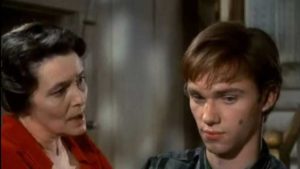 Second-favorite Holiday Movie: Ah yes, The Homecoming: A Christmas Story. Rene is subjected to this torture every Christmas Eve. Cotesfield (Nebraska) kids, I encourage you to watch this movie just to catch the scenes at Ike Godsey’s general story in depression-era 1933. It will remind you of Hanzel’s grocery store. Every year I pause and replay the scene where Patricia Neal (as Olivia Walton) sends John-Boy off on a mission to find his missing father late in the evening on Christmas Eve. John-Boy returns alone around midnight after being dropped off in front of the Walton’s house in the (bootleg whiskey) Baldwin sisters’ father’s sleigh. Patricia Neal slowly shakes her head, clenches her teeth and screeches: “What am I gonna do with you, boy!” Rene often hears me repeat this phrase throughout the year (in fun, of course).
Second-favorite Holiday Movie: Ah yes, The Homecoming: A Christmas Story. Rene is subjected to this torture every Christmas Eve. Cotesfield (Nebraska) kids, I encourage you to watch this movie just to catch the scenes at Ike Godsey’s general story in depression-era 1933. It will remind you of Hanzel’s grocery store. Every year I pause and replay the scene where Patricia Neal (as Olivia Walton) sends John-Boy off on a mission to find his missing father late in the evening on Christmas Eve. John-Boy returns alone around midnight after being dropped off in front of the Walton’s house in the (bootleg whiskey) Baldwin sisters’ father’s sleigh. Patricia Neal slowly shakes her head, clenches her teeth and screeches: “What am I gonna do with you, boy!” Rene often hears me repeat this phrase throughout the year (in fun, of course).
Favorite Holiday Song: Carol of the Bells by Trans-Siberian Orchestra. What a mind-blowing treat to fuse heavy metal and Christmas in a tasteful opus of musicality.
Favorite Holiday Album: There’s so many, I can’t pick just one. They include On This Winter’s Night by Lady Antebellum (before they changed their name), Wintersong by Sarah McLachlan, Christmas by Manheim Steamroller, A Charlie Brown Christmas by the Vince Guaraldi Trio, The Christmas Collection by the Carpenters, The Classic Christmas Album by Luther Vandross, and ‘Tis the Season by the Jackie Gleason Orchestra.

Congratulations, Dr. Gardner!
Before Thanksgiving, Rene and I enjoyed a delightful evening with Lori Gardner, who was in the first cohort of students at the University of Denver Graduate School of Professional Psychology to take classes in the Center for Oncology Psychology Excellence (COPE) specialty. Lori was also the first Diane Simard Endowed Scholarship recipient, and since she recently graduated with her PsyD degree, it’s Dr. Lori Gardner now. Bravo!
The next step for Lori, who lost her mother 20 years ago to breast cancer, is to accrue supervised hours as a postdoctoral fellow and study for exams that will fulfill licensing requirements in Colorado.
If you, or if you know of anyone, who might be interested in working with Dr. Gardner, she is seeing clients at Denver DBT and Psychotherapy (call the main intake line at 303-332-8704 and let them know you’d like to work with her). She specializes in working with clients experiencing life transitions and adjustment difficulties, chronic health conditions including cancer, identity issues, anxiety, depression, relationship issues, personality disorders and the many forms of grief and loss. During our lovely dinner together, she shared her experiences in cancer research before starting her PsyD program at the University of Denver, which focused on behavioral health psychology.
Dr. Gardner is also participating as a mental health provider in Ray of Hope Colorado Cancer Foundation’s Mental Health Support program that I am honored to support. Alternatively, you can reach out to her directly at drlorigardner@gmail.com.
In closing, I am grateful. Grateful for you, for taking the time to absorb/consider/tolerate my monthly thoughts and for reaching out to let me know what strikes a chord—or not. This column (“blog” is apparently no longer a cool-kids term) is more than a labor of love. It’s part of my perpetual healing and learning, and I’m honored to share my reflections with you.
On that note, cancer of all types continues, and several of you have graciously recommended or ordered my book for someone you care about who received the dreaded cancer call. Please know I send healing thoughts and invite them to reach out to me via my website if I can help in any way.
Blessings, joy, and peace to you this holiday season!

October 31, 2021
What Breast Cancer Does to Us
“I found myself underlining in several places and calling a friend to read lines from Diane’s October 2021 blog to him because I found them so helpful. I was particularly touched when she wrote, ‘I only give up when it’s going to cost me more (financially or emotionally) to stay in than to walk away.’ I’ve been searching all my life for the criteria to use for giving up. Like Diane, I’ve always thought failure was not an option. Now I have two perfectly good reasons to say no or goodbye – without feeling guilty. Thank you so much!”
Carter Anne Prescott
CEO, Carter Communications International, Inc.
For the first time in six years, I got all the way to October before realizing it was Breast Cancer Awareness Month. Or as I referred to it in my October 2019 column:

“Pinktober, aka Breast Cancer Awareness Month, those 31 days of hell where I am traumatized by Pepto Bismol-colored ribbons, socks, shirts, bumper stickers, lapel pins, and pocket squares.”
No need to panic. I don’t hate pink as much as I did two years ago, which by the way was less than six months before most of us first heard the term COVID. I don’t know what to say about breast cancer that hasn’t already been said. Helpful suggestions like pay attention, do monthly self-breast exams, don’t blow off your mammogram, learn about the symptoms, consider getting tested for cancer genes…all that is absolutely important.
But there’s more to breast cancer than potential hair loss, anxiety, invasive surgeries, months and months of feeling lousy, and pink. Every person I know who has experienced breast cancer has told me it forever changed their lives. Some, like me, got annoyingly louder and more expressive, while others became quiet and introspective, struggling to find joy.
I was determined to learn the whats and whys about women’s lives after breast cancer (men get breast cancer, too, by the way). So, I turned to my cherished friend, Beverly Vote, a 29-year survivor and publisher of the quarterly magazine, Breast Cancer Wellness, for insight.

Bev is a member of the Board of Directors for the National Consortium of Breast Centers and an advocate for improving the treatment experience. One of the highlights of my year so far is that Bev and I have been having Wednesday morning phone calls at least every other week. She is a mentor, comrade, and cheerleader — encouraging me to keep writing, speaking, rattling cages, seeking solutions, and bringing attention to the psychological trauma created by a cancer experience.
Here are excerpts from a recent chat we had, in question/answer format.
How does breast cancer change us?
We learn to prioritize and we come to understand what’s really important. Sometimes we forget the priority is ourselves. My biggest frustration was getting away from the trap of the American dream. I had the awards, the beautiful home, the great kids, but then I was finally correctly diagnosed (another story) with breast cancer. At age 38 it changed my focus of who I thought I was. Breast cancer gave me permission to live differently than who the status quo told me I should be.
What is your life like today?
My focus has shifted so much. A diagnosis of breast cancer often causes too many to throw the concept of joy out the window. There’s a practice I do every day that brings joy to myself and others. Sometimes it’s something simple like saying a prayer or calling someone to share joy. My influencer in doing that is a woman I met years ago who gave away something of value every day to help her continue to grow. This daily practice has helped me grow what I call a “joy garden.”
Joy is the opposite energy of what breast cancer is. Stress, including trauma, can disrupt our immune system to function optimally. Laughter releases healthy endorphins within our bodies. Laughter is an important part of joy, too, by the way.
Tell us a bit more about your breast cancer experience.
I was misdiagnosed four times, for starters. In the end, I chose a treatment path that felt right for me, and I have continued to stand by that decision. I was so angry about those misdiagnosis traumas that I met with four different attorneys, intending to sue. One attorney said my settlement would take time, the attorney(s) representing me would take a significant amount of the settlement money, and the defendant would attempt to destroy my credibility in the process. In the end, I decided not to sue because that’s not who I am and spending time in a legal battle wasn’t how I wanted to spend my energy. Life after breast cancer becomes a choice on how you want to live your life.
Through my time with breast cancer, I was locked up in fear because my doctors told me the likelihood of my cancer returning was high and it would likely be aggressive. My fears controlled my life. I had my own insurance brokerage that I had started, and I was afraid of losing all that I had built.
But most of all, I was afraid of dying. Eventually, I began studying different religious and spiritual beliefs about dying. Then I had an out-of-body experience and I realized I was more afraid of living than dying.
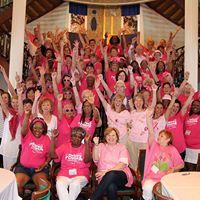
Once I realized how afraid I was of living, I was able to make some significant changes because I was no longer under the grip of fear. One of those changes was to go out on a limb on blind trust and try something new; one of which was starting a publication about whole-person care after a breast cancer diagnosis.
In the end, it’s the people we choose to surround ourselves with who help influence how we deal with our breast cancer experiences. Healing the emotional components of breast cancer are challenging because the diagnosis of breast cancer can shatter our self-image until we learn to see ourselves through a broader, more beautiful scope than what the status quo has programmed us to accept as our self-image or our self-worth. Our healing needs are broader than what cancer doctors learn in school.
Well, I could launch into a separate diatribe based on Bev’s brilliant last statement, but I’ll leave it there and encourage you to ponder her poignant thoughts. Thank you, Bev, for your honesty and candor, but most of all, thank you for your fearless leadership!
What’s Up?

I was recently asked to say a few words about psycho-oncology at the Ray of Hope (Colorado) Cancer Foundation’s Destination Hope Gala. Ray of Hope’s Executive Director, Audra Fleming, reached out to me early this year to ask whether I would help advocate for an initiative to support low-income, Colorado-resident cancer patients seeking individualized mental health support from therapists specifically trained in psycho-oncology.
At the event, Audra announced that since Ray of Hope announced their pilot for the initiative earlier this summer, the response and need for such services has been overwhelming. To learn more, contact me or go to Ray of Hope’s website: https://rayofhopecolorado.org/therapy/
I closed my remarks at the gala with these thoughts, which I repeat often:
“Cancer survivors are human beings, not mere medical commodities, and each of us is a unique, thriving miracle. We need and deserve the services of specially-trained mental health therapists to help us find ourselves again.”
I’ll raise my pink glass to that.

October 4, 2021
My Perfect Imperfections
From the time I entered Kindergarten at Cotesfield, Nebraska School Dist. #14 until I became a teenager, I obsessed and depressed over my vanity.
[image error]Hair. I wasn’t a blonde. I was cursed with dull rusty-brown hair.
Teeth. I didn’t have straight, white teeth like the models in Teen magazine. My teeth were jaggedy and crooked. The gap between my two front teeth reminded me of the Golden Gate bridge.
Feet. Instead of a straight edge on the left side of each foot, I had a bony bump at the base and to the left of each big toe that resembled a camel’s hump. Some brainiac in the early days of the English language decided to play a cruel joke by taking the name of a smelly but flavorful vegetable, the onion, and putting a “b” in front.
Weight. Thanks to two years of steroids to conquer a blood disease caused by an immune system that nearly failed me, I chubbed out at the age of 8.
I was clumsy (zero athletic ability), puffy, and pale, plus I had freckles AND acne, and was demanding of myself and others. On top of that I had no personality. Nothing amusing or intelligent ever came out of my mouth. I viewed myself as a nerdy brainiac, striving for perfection, always trying to one-up my friends. All while silently screaming to be noticed and to figure out my place.
And now…the stories behind how I conquered each of these perceived imperfections.
The Hair
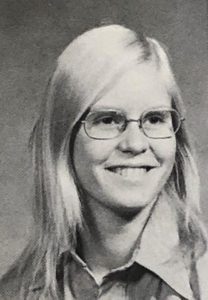 Let’s go back to our nation’s bicentennial year, 1976. I was 11 – no longer able to get by on homely little-girl cuteness. Not old enough yet for makeup and still too clumsy to operate a curling iron without burning my forehead and ears. My older sister, Marilyn, was in 10th grade and had blonde hair and plenty of boys chasing her, as did all the other popular blonde girls. For some reason, blondes got all the attention, were prettier, were more graceful, and managed to unapologetically breeze through life.
Let’s go back to our nation’s bicentennial year, 1976. I was 11 – no longer able to get by on homely little-girl cuteness. Not old enough yet for makeup and still too clumsy to operate a curling iron without burning my forehead and ears. My older sister, Marilyn, was in 10th grade and had blonde hair and plenty of boys chasing her, as did all the other popular blonde girls. For some reason, blondes got all the attention, were prettier, were more graceful, and managed to unapologetically breeze through life.
My hair in 1976 was parted in the middle and hung down to the middle of my back. It was wavy and dull, and tangles perpetually collected behind my neck. Breck’s conditioner called No More Tangles was a joke.
And then, in my early high school years, I discovered the wonders of home perms. Mom patiently combed and placed sections of dull hair around every available curler in the house. Then she trussed me up in raggedy old bath towels, put on plastic gloves and played chemist, pouring solutions from various bottles in the home perm box into a plastic bottle. She gave the bottle a good Donna-shake, snipped off the tip of the bottle’s spout with a pair of scissors, asked me to lean over the kitchen sink, and squirted the entire bottle over all those pink curlers as I forced back ammonia-induced gags. I dripped over the sink for a minute, then she placed a plastic bag over the curlers, gave the bag a twist near my forehead and secured it in place with a silver metal hair clip. Then I lifted my head out of the sink and cringed as chemicals dripped down the back of my neck. I “processed” for 20 minutes, dreaming of long flowy curls. What I got was a headful of kinked-up curls so tight I could barely pull a comb through the mess for the next four weeks.
In hindsight, what home perms did was gear me up for the big hair phase of the late 1980s. Funny, our kitchen sink never experienced a clog, either.
Thankfully, in the 1990s I stopped frying my hair with permanents and settled on sensible hairstyles. I was in the early days of my career when I was introduced to a woman who had naturally blonde hair but had chosen to color her hair brown. She was an engineer, and she had gotten tired of men not taking her seriously in the workplace as a blonde.
From that day forward, I loved being a brunette.
The Teeth
[image error]I inherited my full-blooded Czech father’s quirkiness, his loyal concern for others, and his bad teeth genes. While my brothers and sister only got one cavity every couple of years, I had a mouthful of fillings. One of my previously-mentioned Golden Gate bridge front teeth eventually developed a cavity, which allowed my dentist to create a crown that closed the gap for a short while. Until my junior year in high school, when I experienced menstrual cramps so severe I fainted after walking out of the high school superintendent’s office after using his assistant’s phone to call my mother to come get me. I fainted forward and fell on my face, chipping my crowned tooth.
That forward tumble was the beginning of all kinds of trouble. The chipped tooth was repaired but died 15 years later, so I got implants – no not THOSE types of implants. I got dental implants for the deceased front tooth and the tooth next to it, since it, too, was facing imminent death. I was awake but zoned out on serious muscle relaxers for that dental implant surgery, but I vividly remember the periodontist using what looked like a Black+Decker power tool to screw the two implants into the bone above my front teeth.
Thanks again to those bad teeth genes, most of the rest of my front teeth were eventually either crowned or replaced with implants.
Voilà. I finally had perfect, fake front teeth. Problem solved.
The Feet
This one doesn’t have a happy ending. My bunions have gotten worse with time, and my second left toe is now a “claw toe” because my big left toe is slanted so far left. I have ugly feet and wear orthotics, which actually doesn’t help with bunion pain but does wonders for my lower back pain and supination, since my feet roll outward.
During one of my last trips to the podiatrist, his physician’s assistant told me that, based on x-rays of both feet, I must have an incredibly high tolerance for pain. “Your left foot is full of arthritis, and your bunions will only get worse until the day you can no longer stand the pain.” Given everything that’s wrong with my feet, the podiatrist recommended I wait to have surgery, which will be so complex and debilitating that I won’t be allowed to walk for two months, then will have to wear a boot on each foot for an entire year.
So, for now I wear expensive Brooks tennis shoes, orthotics, and kitten heels. I still have two pair of amazing stiletto heels in my closet that I can’t wear but refuse to part with. Reminders, if you will, of what helped contribute to my chronic foot pain. As senseless as it sounds, I have no regrets.
The Weight
This one’s easy. If I don’t drink alcohol, eat no bad carbs, eat only lean protein, eat no sugar, do resistance training three times a week, and do 30 minutes of aerobic exercise in the morning AND evening of each day for a total of 60 minutes a day, I can get and stay lean. I know this because I have lived it. But with a full-time job that requires me to be plugged in every moment I’m awake, three different organizations I support as an advocate for their psycho-oncology efforts, this monthly column, gardening, houseplants, a wonderful husband and family, Facebook and LinkedIn networking, about four hours of cooking each week to ensure we eat as healthy as possible, WaterPik once a day (am still cursed with unhealthy teeth and gums), housecleaning, socializing with adorable friends, etc., I have decided to be realistic about my weight and focus on living and loving.
I exercise every day but I don’t get down if I miss a workout. My focus is on stretching and building muscle, since the after-cancer drug reduced my bone density to dangerous levels. I like wine and snacks and a good burger. And I’m healthiest from October to May, when the deck, hummingbirds, and weeds in our backyard aren’t calling me.
I’m at peace knowing what makes me happy. Obsessing about my weight is not one of the things that makes me happy.
To sum things up, why were these perceived imperfections so painful in childhood? Because I am programmed to succeed. Failure isn’t an option. I only give up when it’s going to cost me more (financially or emotionally) to stay in than to walk away. My day is made up of tasks that get me to where I need to go. Each morning I make a prioritized mental list of what needs to get accomplished to stay on track, get stuff done, and operate at maximum possible efficiency. Lists are an important part of my strategy, not just to keep me organized but to show progress. Crossing stuff off lists can be a beautiful thing.
Cancer taught me to change my mindset from “What all can I get done today?” to “What can I realistically get done today?” I don’t set the bar low. I have learned to make the bar challenging, yet realistically achievable. One of the easiest ways for me to launch into a depressed state is to expect too much of myself and of course, others.
I am responsible for me. And only me. I’m not here to save the world. My job is to hold myself and others accountable for holding up my/their end of the deal.

In August I was honored to spend time with Katia Goga, who has started her second year in the PsyD program at GSPP – Graduate School of Professional Psychology at Univ of Denver, focusing on psycho-oncology (COPE). Katia, who is from Brownsville, Texas, is part Croatian and has a beautiful soul inside and out. “It is such a grounding experience for me to be around cancer patients and survivors,” she told me.
I am so grateful to all students of psycho-oncology like Katia who have made the commitment to help those traumatized by cancer find themselves again. We are truly blessed!
What I’m Loving Right Now
I will leave you this month with a recommendation to listen to a haunting song I heard on the brilliant Netflix series, Firefly Lane. It’s titled Who Knows Where the Time Goes, sung by the late Eva Cassidy. I encourage you to find a quiet spot, then curl up with a soft blanket, headphones, and your beverage of choice. Close your eyes, have a listen, a cleansing cry, and a moment of pure solitude.
To keeping it real!

August 31, 2021
20 Years: Reflections and Healing
I was going to open this post with a statistic about how many attacks have occurred on American soil. But I realized the term “attacks” can now be interpreted countless ways.
And here comes the cliché: It’s complicated.
Instead, let’s just get to it and reflect on 9/11 from the perspectives of my husband, Rene Simard; his parents, Josie and Chanel Simard; and a delightful friend of the Simard family, Jennifer Smith, whom you hopefully read about late last summer when I wrote the three-part series about Rene’s deployment to Saudi Arabia on the 30th anniversary of Desert Shield/Desert Storm.
To set the stage, please note that 20 years ago some of us had flip phones and personal digital assistants, but very few had access to real-time news that came to our “devices.” Most of us got our news from a radio or television, or from the internet via a desktop computer where news websites looked like this:

Rene’s Story
9/11 was a picturesque, cloudless day in Washington, DC. I had been promoted to Chief Master Sergeant in the Air Force (E9) three years earlier and had been stationed at the Pentagon for 18 months. I was the Logistics Plans Career Field Manager, as most of the Air Force career field job specialties had a Chief Master Sergeant whose job was to manage that career field.

Typically, career field manager positions were given to Chiefs with more leadership experience (5-10 years’ time-in-grade), but I literally drew the short straw. It was an intense job with more responsibility than I’d ever had, but I was managing to hold my own.
While at the Pentagon, I relished my five-mile runs over lunch around the National Mall every other day. The landmarks were an inspirational reminder of all that our country had been through, not to mention the selfless sacrifices made by leaders and warriors for our freedoms. On Sept. 10, 2001, I ran with a friend who urged me to take a longer, 7.5 mile, run. At about mile 6, my right heel began to hurt since we were running on pavement.
On the morning of 9/11, my right heel was tight and it was painful to walk. Symptoms of an eventual diagnosis of plantar fasciitis were kicking in. I chose to wear my battle dress uniform because I thought combat boots would provide more support for my heel in case I needed to be on my feet more than usual.
After arriving at my desk at 7 a.m. at the Logistics Plans Division in the Pentagon, I did my routine check of emails and voicemails, then returned some calls. Later on, my boss, an Air Force Colonel, and I walked over to a scheduled logistics staff meeting in the LGX office.
During the staff meeting, someone interrupted with: “Two planes have flown into the World Trade Center in New York City and you all need to get back downstairs. We are activating the Combat Support Center.”
My first thought was whether a plane might try to fly into the Pentagon, since I assumed our nation was under attack. Contemplations raced through my head as my boss and I briskly walked back to our office, three floors underground on the opposite side of the massive building. I erased thoughts about the throbbing pain in my heel, which felt like I was walking on burning charcoal.
We arrived back at our office area, which had become part of the Air Force Command Center. Everyone was fixated on a large TV in one of the offices, and the first images I saw were of both planes flying into the World Trade Center towers, which looped repeatedly. We had not received any orders yet, so no one knew exactly what to do. So we kept watching.
Soon after, a call came in, reporting that the Pentagon had been hit. We hadn’t felt or heard a thing, nor did the building shake. Although it was tempting to go to the site of the crash to help, we were ordered to stay in place. The military was also ordered to a high state of alert and we got to work, reviewing deployment orders, alert procedures and even implementing plans to move a mobile transportable hospital to lower Manhattan. It sure felt like we were at war, but with whom?
By early afternoon, I could smell smoke in the Pentagon’s ventilation system and the command center was ordered to evacuate. I reported to a staging area to hop on a Blackhawk helicopter and head for Bolling Air Force Base across the Potomac River to help establish a temporary Air Force Command Center.

After we were finally set up at Bolling, I was able to get through to my parents late that afternoon to let them know I was safe. I was on duty until 10 that night until relieved by personnel who were released earlier in the day. The next day, we reported for duty back at the Pentagon, working 12-hour shifts, sometimes through the weekends, for the next five months. No one ever complained. I was never prouder to be serving my country than I was in the days and months that followed.
About one month later, I finally had time to schedule a doctor appointment to have my heel checked. We were fortunate to have a clinic located in the Pentagon. “Yep, it’s plantar fasciitis,” he said. “No running for you for at least eight months.” I was annoyed at myself for running those extra miles, but my eight months on a stationary recumbent bike allowed opportunities for valuable introspection.
In reflection, 9/11 intensified my patriotism and the appreciation I have for our country’s liberties. I had been contemplating retirement in about 18 months when my Pentagon assignment was due to end. However, the horrible events of that day and the tremendous response of my brothers and sisters in arms convinced me to stay in the Air Force, to proudly continue to honor my oath to support and defend the Constitution of the United States.
Josie’s Story
Chanel and I were at home in Salem, New Hampshire, that morning. From the moment events began to unfold, we worried about Rene. When we learned a plane had hit the Pentagon, I was paralyzed by fear, so I kept moving. Answering endless phone calls from friends and family asking whether Rene was okay, setting out food and snacks for family members who arrived. Chanel did not budge from the television, and he kept silent the entire time we waited for news about Rene. It was a terrible day.
Finally, late that afternoon we finally learned Rene was okay. When I answered the phone and heard Rene’s voice, I was so relieved I screamed. Soon after, family members were hugging each other and crying. Thank God our son was safe. To this day, my heart goes out to any parent who has a child serving in the military who goes through a similar experience.
Jennifer’s Story
Ten years after Desert Shield/Desert Storm — when I became Rene’s pen pal as part of a class assignment — I was in my first semester of college at Keene State College in Keene, New Hampshire. I was 18 and on my own. It was only week two of college and I was having a tough start.
The morning of 9/11, I had taken a quiz in my 8 a.m. psych class and was taking a nap before my 11 a.m. history class. Soon after, someone banged on my door to let me know the World Trade Center had been hit. Several of us huddled around a TV in a dorm room upstairs and watched the events unfold. When the news station announced an airplane had flown into the Pentagon, I started crying and called my mom, asking her to try to find out if Rene was okay. I knew he worked at the Pentagon, but didn’t know where in the building.
I knew I should be thinking about all the lives lost, but all I could think about was Rene. Mom called back and said she talked with Chanel and Josie, but they had not yet gotten through to find out if Rene was alright. We watched TV coverage all day and I couldn’t eat. I was anxious, feeling helpless but hopeful. Rene was okay — I just needed to hear it.

After he and I had become pen pals 10 years prior, mom put a 3 x 5” picture of Rene in his fatigues in a frame, which ended up going with me every place I lived. Somehow, he was like a member of our family. The glass in the frame eventually broke, but I never put the picture in a new frame. I felt so special that I had had a connection at such a young age with someone serving our country. Maybe in a way I wanted to know I had more than just my family guiding me. His family came to my first communion and cookouts, and it seemed we always kept in touch without keeping in touch. I admired everything Rene and his family had done, and I knew they would drop everything if I ever needed help.
During Desert Shield/Desert Storm, I was the only one in my class who got a return letter from a soldier. I’ll never forget the impact Rene’s letters had on me. At the welcome home parade in Salem after the war — the first time I met Rene in person — I was so excited the organizers wanted to include me in the program, and I remember I got to carry the yellow balloon that said “Rene.”
The night of Sept. 12, 2001, mom finally found out Rene was okay, and she called to let me know. I remember crying tears of joy, and I’m pretty sure I kissed his picture that night. The next time I saw Josie and Chanel, I hugged them for what felt like five minutes. I think of Rene every year on 9/11, and I also think of Chanel, because it’s his birthday.
To this day, I still tell the story about Rene being my pen pal and what an honor it is to be part of his and his family’s lives.
***
My gratitude and thanks to Rene, Josie, Chanel, and Jennifer for their candor and honesty.
In closing, where was I that awful morning? Driving to a “friend-raiser” breakfast at the Denver Museum of Nature and Science. The museum was proposing to build an educational exhibit featuring America’s achievements in space, and the company I worked for was considering a donation. I was listening to Denver’s AM talk radio station KOA in the car, which was interrupted by breaking news that a small airplane had flown into one of the World Trade Center towers.
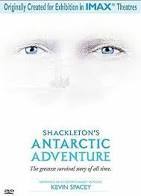
For the next several minutes, commentators tried to speculate how a small airplane could have veered into such highly restricted air space. I parked at the museum, enjoyed a continental breakfast and listened to the museum director’s pitch about building the space exhibit, then was treated to a showing of Shackleton’s Antarctic Adventure, an extraordinary 40-minute documentary, in the Imax theater.
After the film ended, a representative from the museum came to the podium in the theater, thanked everyone for attending, then said she had some sobering news. “Over the past 90 minutes, two airplanes have flown into the World Trade Center and both towers have now collapsed, another airplane has flown into the Pentagon, and another likely hijacked airplane is headed for Washington, DC.”
That moment of shock and terror is a close second only to hearing these words: “I’m sorry to have to tell you the cells from both biopsies came back positive for cancer.”
My goal with these 9/11 stories is not to shock, blame, or re-open old wounds. Instead, I sincerely believe contemplative reflection is an important tool for healing. My heart will never stop aching for all the human lives taken, the lifelong trauma the events created, and the innocence that was stolen. At age 36, terrorism finally got real to me that day. Unfortunately, it is still far too real today.
May our world never give up on the pursuit to co-exist in peace.

This month I have a heartfelt postscript. Our family in Nebraska said farewell to a dear friend, Leonard Williams, on August 17. Leonard, who courageously endured multiple bouts with colon cancer, was my brother-in-law Russell’s brother and a very close friend to my brother, Lee, who has now lost two of his best life-long friends to cancer 364 days apart. Lee and Leonard coached Grand Island’s Home Federal men’s fast-pitch softball team that won the national championship in a Hoosiers-style effort 20 years ago, also in 2001. Leonard always wore number 9 on his softball jersey, in honor of the great Ted Williams.
Our prayers for reflective healing and strength go out to Leonard’s wife, Judy, and the entire Williams family.
Ol’ Number 9, this is for you:

July 27, 2021
Psycho-oncology: A Future Therapist’s Perspective
One of my greatest joys is when a young professional reaches out to let me know they have decided to study what is called psycho-oncology—an interdisciplinary field at the intersection of the physical, psychological, social, and behavioral aspects of the cancer experience for patients, survivors, and caregivers.
Those are substantial words to essentially say that cancer tends to wreak holy havoc on one’s body and mind, not to mention the impact it has on caregivers who are often just as frightened and confused as the ones experiencing cancer.
About two years ago, a delightful woman, Stephanie Bennett, attended a Cancer Center Lunch and Learn talk I gave at the University of Colorado Anschutz Medical Campus. As she explains it, she was too emotional to introduce herself afterward; however, she reached out later to let me know her discovery of psycho-oncology had been a life-changing event. We became close friends, and she is now pursuing a Master of Social Work degree at the University of Denver’s Graduate School of Social Work. Earlier this year, I asked if she would collaborate with me on an educational blog post about the whats and whys of psycho-oncology, and she graciously agreed. Please meet the lovely, dedicated, and brilliant Stephanie Bennett in Q&A format. Thank you, Steph! Learn more about, and connect with her, here: https://www.linkedin.com/in/stephaniejbennett1/
Quick overview of where you grew up, your undergrad degree and what brought you to Denver
I was born in Montreal, Quebec, and moved with my family to the U.S. when I was quite young. I grew up in Rockford, Illinois, with my parents and two older brothers. I earned my Bachelor of Science in Psychology and Cognitive Science (double major) from Minnesota State University in 2014 and relocated to Denver soon after graduation.

Why were you attracted to psycho-oncology?
Like most, I have had several people in my life impacted by cancer. In watching their journeys, I began to recognize the dearth of psycho-social resources available to cancer patients and their loved ones. I was drawn to psycho-oncology after witnessing the lack of support available to individuals not only going through treatment but throughout the entire course of their cancer experience (from diagnosis through treatment into survivorship). From the first time I heard Diane speak at an event at the University of Colorado and read her book, The Unlikely Gift of Breast Cancer, I felt like I had found my calling—Diane put into words the feelings and concerns I observed in family members and friends during their cancer journey. I feel compelled to make a difference in the lives of patients and their families and strive to one day ensure nobody facing cancer feels lost nor alone.
Please explain why you have selected an educational path that allows you the maximum flexibility for clinical work and research.
Currently I am a graduate student in the Graduate School of Social Work at the University of Denver working toward becoming a licensed clinical therapist with a focus on oncology and chronic health conditions. After working in a research setting for many years with individuals with long-term health conditions including cancer, spinal cord injury, and traumatic brain injury, I began to feel a disconnect between the work I was doing, and the impact made on the lives of patients. Bringing research “from bench to bedside” to directly make meaningful change in the lives of patients takes time, and people need our help now. By earning my graduate degree in social work, I will learn tools to help patients and their families through the emotional and psychological demands brought on by cancer as well as provide essential resources necessary to decrease the burden brought on by disease.
Share what classes you have taken/will take and are required to become a licensed clinical therapist – what are your favorites and least favorites? Why?
Thus far in my graduate career I have completed courses in Psychotherapy, Psychopathology, Clinical Assessment, Personality Assessment, and Ethics and Professional Issues, among others. In the coming months I will take courses including Clinical Social Work Skills, Assessment of Mental Health Across the Lifespan, Clinical Social Work Theory and Practice, Mental Health and Health Care Policy, and will begin my first of two community-based internship placements. I am most excited for my upcoming work in the community through internship and work post-graduation. Learning theory, assessment, and the ethics and factors to consider when working with patients is extremely interesting and rewarding, however I feel nothing compares to actually being in the field working 1-1 with an individual or family!

Of the cancer patients/survivors/caregivers you have worked with already, what are your takeaways?
In both my professional and personal life, I have had the opportunity and privilege to work with and get to know a wide variety of cancer patients, survivors, caregivers, families and loved ones, and have learned something from each of them. Cancer impacts each individual differently. Furthermore, cancer is intricate and often works in strange and unexpected ways.

Through my time working at the University of Colorado Cancer Center, I have found it is incumbent on the patient to advocate for themselves and to make their needs known. Married to this is the idea that it often takes a village to face cancer. Patients take so much support from their network of people—medical professionals such as doctors and nurses, imaging specialists and surgery techs, as well as family members, friends, co-workers and colleagues, loved ones and other cancer patients and survivors—thus it is vital to tap into supports during challenging times. In addition to this large and varied group of supporters, patients still all too often report feeling alone, unsure of what to do next nor who to ask, wondering what resources may be out there to support them, and wishing for someone—anyone—to understand something about their journey they haven’t been able to reach anyone about.
What makes cancer-related physical and psychological trauma unique?
Cancer is a word that strikes fear into the hearts and minds of many. Its nature and behavior are still in many ways a mystery to us. Despite many significant advancements in the understanding of cancer over the years, the relative unknowns about cancer make it a black box that take away the comfort and security of life pre-cancer. The trauma brought on by cancer looks different in each individual and poses unique challenges to everyone touched by the diseases. As Diane writes in The Unlikely Gift of Breast Cancer, “cancer is inconvenient, inconsiderate, and extraordinarily covert” (p. 77).
Please explain where our healthcare system is at right now in terms of offering and encouraging those impacted by cancer to care about the psychological impact. What works? What doesn’t?
Psychological care is fortunately on the rise in the United States. Organizations such as the National Alliance on Mental Illness (NAMI) work tirelessly to lessen the stigma surrounding mental illness and reaching out to mental health professionals such as therapists, counselors, psychologists and psychiatrists. Despite this effort, many individuals still do not feel comfortable reaching out for help. Additionally, many communities lack an adequate supply of mental health providers with availability (plus there is often a lack of providers specialized in treating patients with long term health conditions such as cancer). Insurance and cost concerns are often another barrier to receiving care in that many insurance companies may only cover a limited amount of visits and/or certain providers (which may not encompass a preferred provider or a specialist such as an oncology social worker or psycho-oncologist). If an individual opts to pay out of pocket for visits with a provider not covered by insurance, or if they are uninsured, costs can inhibit ongoing, continued care which is frequently more appropriate than short-term treatment courses.
Please share why you believe mental health needs need to be addressed immediately after a person receives a cancer diagnosis. What do you think an ideal team approach should look like?
In a perfect world, I feel that newly diagnosed patients should be contacted by a medical health professional immediately after the dreaded “cancer call.” Just like regular meetings with medical staff such as nurses, oncologists, and surgeons, patients should have the option to visit with a psychosocial provider of their choosing (a psychologist or social worker, therapist, etc.) who they can speak to in a safe and confidential environment about anything related to their cancer experience. This specialist can help see to the needs of patients preemptively rather than having a patient wait until a problem arises to seek out necessary support. I would be remiss if I didn’t include the caveat that some individuals may feel they don’t feel the need to have a relationship with a counselor or other professional and that is absolutely fine as well. My life’s work is to ensure there are enough trained professionals in every community so anyone wishing to connect with a mental health professional in relation to their experience with cancer has the option available. Long term health conditions such as cancer are a unique stressor that bring about a variety of challenges both to the patient as well as their loved ones. Treatment teams must take it upon themselves to not only treat the disease, but to also treat the person, body and mind.
Well, there you have it! Brilliantly described by a compassionate student in the psycho-oncology field who believes (as I do) that the “team approach” to cancer needs to be expanded to ensure psycho-oncology has a permanent seat at the cancer treatment team’s table. Many cancer care centers are already embracing this concept—some more rapidly than others—but the winds of change have arrived, and leaders like Stephanie will carry us into the future. Woo-hoo! We are in good hands!
Before I go, last month a podcast I recorded earlier this year went live on Frank Zaccari’s Life-Altering Events series. Frank took a particularly compelling approach to why I am passionate about the bizarre combination of electric airplanes and psycho-oncology, and it’s one of my most favorite interviews so far. Listen and watch here:
I am working on a special treat for you next month, in recognition of the 20th anniversary of 9/11. Many of you know that my husband, Rene, was at the Pentagon that awful day, but there’s way more to the story than what I wrote about in The Unlikely Gift. Please be sure to tune in.
My thanks again to Stephanie Bennett for her courageous passion to help those impacted by cancer, and for her willingness to collaborate on this post. If you know of someone interested in psycho-oncology, either as a receiver of care or as a care provider, I’d be grateful if you would share this post with them, which—like all my blog posts—are available on my website, DianeMSimard.com. Thank you!
Love and hugs,
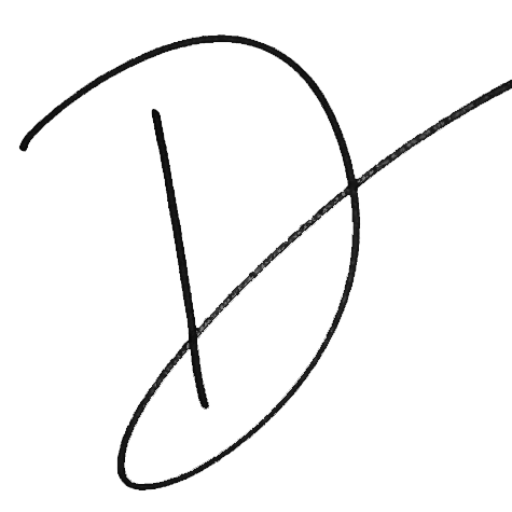
Psycho-oncology: A Future Therapist’s Perspective
One of my greatest joys is when a young professional reaches out to let me know they have decided to study what is called psycho-oncology—an interdisciplinary field at the intersection of the physical, psychological, social, and behavioral aspects of the cancer experience for patients, survivors, and caregivers.
Those are substantial words to essentially say that cancer tends to wreak holy havoc on one’s body and mind, not to mention the impact it has on caregivers who are often just as frightened and confused as the ones experiencing cancer.
About two years ago, a delightful woman, Stephanie Bennett, attended a Cancer Center Lunch and Learn talk I gave at the University of Colorado Anschutz Medical Campus. As she explains it, she was too emotional to introduce herself afterward; however, she reached out later to let me know her discovery of psycho-oncology had been a life-changing event. We became close friends, and she is now pursuing a Master of Social Work degree at the University of Denver’s Graduate School of Social Work. Earlier this year, I asked if she would collaborate with me on an educational blog post about the whats and whys of psycho-oncology, and she graciously agreed. Please meet the lovely, dedicated, and brilliant Stephanie Bennett in Q&A format. Thank you, Steph! Learn more about, and connect with her, here: https://www.linkedin.com/in/stephaniejbennett1/
Quick overview of where you grew up, your undergrad degree and what brought you to Denver
I was born in Montreal, Quebec, and moved with my family to the U.S. when I was quite young. I grew up in Rockford, Illinois, with my parents and two older brothers. I earned my Bachelor of Science in Psychology and Cognitive Science (double major) from Minnesota State University in 2014 and relocated to Denver soon after graduation.

Why were you attracted to psycho-oncology?
Like most, I have had several people in my life impacted by cancer. In watching their journeys, I began to recognize the dearth of psycho-social resources available to cancer patients and their loved ones. I was drawn to psycho-oncology after witnessing the lack of support available to individuals not only going through treatment but throughout the entire course of their cancer experience (from diagnosis through treatment into survivorship). From the first time I heard Diane speak at an event at the University of Colorado and read her book, The Unlikely Gift of Breast Cancer, I felt like I had found my calling—Diane put into words the feelings and concerns I observed in family members and friends during their cancer journey. I feel compelled to make a difference in the lives of patients and their families and strive to one day ensure nobody facing cancer feels lost nor alone.
Please explain why you have selected an educational path that allows you the maximum flexibility for clinical work and research.
Currently I am a graduate student in the Graduate School of Social Work at the University of Denver working toward becoming a licensed clinical therapist with a focus on oncology and chronic health conditions. After working in a research setting for many years with individuals with long-term health conditions including cancer, spinal cord injury, and traumatic brain injury, I began to feel a disconnect between the work I was doing, and the impact made on the lives of patients. Bringing research “from bench to bedside” to directly make meaningful change in the lives of patients takes time, and people need our help now. By earning my graduate degree in social work, I will learn tools to help patients and their families through the emotional and psychological demands brought on by cancer as well as provide essential resources necessary to decrease the burden brought on by disease.
Share what classes you have taken/will take and are required to become a licensed clinical therapist – what are your favorites and least favorites? Why?
Thus far in my graduate career I have completed courses in Psychotherapy, Psychopathology, Clinical Assessment, Personality Assessment, and Ethics and Professional Issues, among others. In the coming months I will take courses including Clinical Social Work Skills, Assessment of Mental Health Across the Lifespan, Clinical Social Work Theory and Practice, Mental Health and Health Care Policy, and will begin my first of two community-based internship placements. I am most excited for my upcoming work in the community through internship and work post-graduation. Learning theory, assessment, and the ethics and factors to consider when working with patients is extremely interesting and rewarding, however I feel nothing compares to actually being in the field working 1-1 with an individual or family!

Of the cancer patients/survivors/caregivers you have worked with already, what are your takeaways?
In both my professional and personal life, I have had the opportunity and privilege to work with and get to know a wide variety of cancer patients, survivors, caregivers, families and loved ones, and have learned something from each of them. Cancer impacts each individual differently. Furthermore, cancer is intricate and often works in strange and unexpected ways.

Through my time working at the University of Colorado Cancer Center, I have found it is incumbent on the patient to advocate for themselves and to make their needs known. Married to this is the idea that it often takes a village to face cancer. Patients take so much support from their network of people—medical professionals such as doctors and nurses, imaging specialists and surgery techs, as well as family members, friends, co-workers and colleagues, loved ones and other cancer patients and survivors—thus it is vital to tap into supports during challenging times. In addition to this large and varied group of supporters, patients still all too often report feeling alone, unsure of what to do next nor who to ask, wondering what resources may be out there to support them, and wishing for someone—anyone—to understand something about their journey they haven’t been able to reach anyone about.
What makes cancer-related physical and psychological trauma unique?
Cancer is a word that strikes fear into the hearts and minds of many. Its nature and behavior are still in many ways a mystery to us. Despite many significant advancements in the understanding of cancer over the years, the relative unknowns about cancer make it a black box that take away the comfort and security of life pre-cancer. The trauma brought on by cancer looks different in each individual and poses unique challenges to everyone touched by the diseases. As Diane writes in The Unlikely Gift of Breast Cancer, “cancer is inconvenient, inconsiderate, and extraordinarily covert” (p. 77).
Please explain where our healthcare system is at right now in terms of offering and encouraging those impacted by cancer to care about the psychological impact. What works? What doesn’t?
Psychological care is fortunately on the rise in the United States. Organizations such as the National Alliance on Mental Illness (NAMI) work tirelessly to lessen the stigma surrounding mental illness and reaching out to mental health professionals such as therapists, counselors, psychologists and psychiatrists. Despite this effort, many individuals still do not feel comfortable reaching out for help. Additionally, many communities lack an adequate supply of mental health providers with availability (plus there is often a lack of providers specialized in treating patients with long term health conditions such as cancer). Insurance and cost concerns are often another barrier to receiving care in that many insurance companies may only cover a limited amount of visits and/or certain providers (which may not encompass a preferred provider or a specialist such as an oncology social worker or psycho-oncologist). If an individual opts to pay out of pocket for visits with a provider not covered by insurance, or if they are uninsured, costs can inhibit ongoing, continued care which is frequently more appropriate than short-term treatment courses.
Please share why you believe mental health needs need to be addressed immediately after a person receives a cancer diagnosis. What do you think an ideal team approach should look like?
In a perfect world, I feel that newly diagnosed patients should be contacted by a medical health professional immediately after the dreaded “cancer call.” Just like regular meetings with medical staff such as nurses, oncologists, and surgeons, patients should have the option to visit with a psychosocial provider of their choosing (a psychologist or social worker, therapist, etc.) who they can speak to in a safe and confidential environment about anything related to their cancer experience. This specialist can help see to the needs of patients preemptively rather than having a patient wait until a problem arises to seek out necessary support. I would be remiss if I didn’t include the caveat that some individuals may feel they don’t feel the need to have a relationship with a counselor or other professional and that is absolutely fine as well. My life’s work is to ensure there are enough trained professionals in every community so anyone wishing to connect with a mental health professional in relation to their experience with cancer has the option available. Long term health conditions such as cancer are a unique stressor that bring about a variety of challenges both to the patient as well as their loved ones. Treatment teams must take it upon themselves to not only treat the disease, but to also treat the person, body and mind.
Well, there you have it! Brilliantly described by a compassionate student in the psycho-oncology field who believes (as I do) that the “team approach” to cancer needs to be expanded to ensure psycho-oncology has a permanent seat at the cancer treatment team’s table. Many cancer care centers are already embracing this concept—some more rapidly than others—but the winds of change have arrived, and leaders like Stephanie will carry us into the future. Woo-hoo! We are in good hands!
Before I go, last month a podcast I recorded earlier this year went live on Frank Zaccari’s Life-Altering Events series. Frank took a particularly compelling approach to why I am passionate about the bizarre combination of electric airplanes and psycho-oncology, and it’s one of my most favorite interviews so far. Listen and watch here:
I am working on a special treat for you next month, in recognition of the 20th anniversary of 9/11. Many of you know that my husband, Rene, was at the Pentagon that awful day, but there’s way more to the story than what I wrote about in The Unlikely Gift. Please be sure to tune in.
My thanks again to Stephanie Bennett for her courageous passion to help those impacted by cancer, and for her willingness to collaborate on this post. If you know of someone interested in psycho-oncology, either as a receiver of care or as a care provider, I’d be grateful if you would share this post with them, which—like all my blog posts—are available on my website, DianeMSimard.com. Thank you!
Love and hugs,

June 30, 2021
Did That Really Happen? Mid-life Interpretations & Confessions
My favorite part of summer is early morning. From 5 to 6:30 a.m., before that fireball in the sky begins its daily scorching as it clears the horizon.
For nearly two glorious hours, the air is refreshingly cool here in Colorado and the birds are at their chirpiest. Sheer bliss. Then, the hair dryer, also known as the dry summer wind, flips on and I begin thinking in sound bytes. This phenomenon only happens during the blazing days of summer, so I thought this month I would share my confessions and interpretations of mid-life and daily life in snippets.
Yes. All this stuff really happened.

I recently received a spam email with this subject line: Learn to stay focused on what’s important!
Interpretation: What’s important is me staying focused by not spending any time opening your annoying email.
Curious Dream: I am living on the top floor of a treehouse. There are glass ceilings in my bedroom, which makes for interesting nature-watching, but somehow a baby bear climbs a tree and finds its way into my room. I spend my dream chasing the bear out of my room because I’m afraid if it stays too long it will try to come back as an adult.
Interpretation: Don’t feed the bears!
Confession: My first car was a baby blue 1978 Dodge Monaco with an electrical problem so severe that whenever it rained the car would stop running. At a stoplight or even on the highway. Thankfully, each time it happened I managed to steer the car to the side of the road, waited 30 minutes, then it would start.
“Or” Confessions:
Grease or Saturday Night Fever? Saturday Night Fever
Blended or on the rocks? Rocks
Cat or Dog? Dog
Coke or Pepsi? Coke (well actually, caffeine-free Diet Coke)
Ralph or Potsie? Potsie
Jon or Ponch? Ponch
Coffee or tea? Both will do just fine (caffeine-free, of course)
Spring or summer? Spring
Wine or beer? Wine
Red, white, or blue? Blue
Netflix or network TV? Netflix
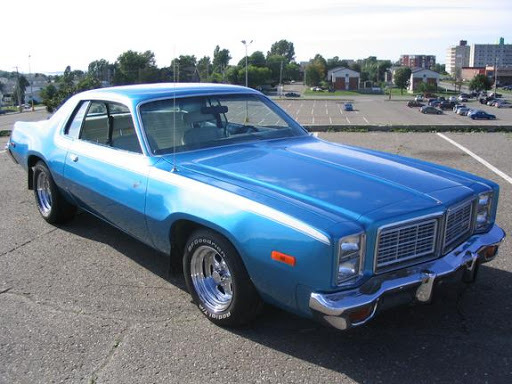
Confession: The NextDoor app is priceless entertainment cuz neighbors actually post stuff I only think about. Such as, “People drive way too fast in the Highlands Ranch Ace Hardware parking lot and need to slow down,” or “Here’s a photo of a bull snake that was in my driveway having a bunny rabbit for dinner.” Of course I had to look, and yes it was gross.
Rene and I recently spent a long weekend in central Nebraska to visit family and meet the babies in our family born during the pandemic. Thanks to high humidity and crops, Nebraska has black bugs the size of gnats that resemble floaters in my eyes, so I was swatting all weekend. About half the time there were actually bugs flying around my head.
Interpretation: Cataract surgery in my right eye is not far away.
Creepy Dream: I am walking toward a room with a fiery red glow dancing on the walls and a queen-size bed in the center of the room. I think I am in the bed, and I hear clunking noises as I enter the room. Cans of soup are dropping on the floor from under the bed and rolling across the floor. Thankfully, Rene wakes me up because I am whimpering.
Interpretation: This one’s a stumper.
Observation: A few weeks ago, Rene and I were strolling through Park Meadows Mall in Lone Tree when he jokingly asked, “Can we go to Apocolyptics?” I stopped and stared at him, then exclaimed, “Oh, you mean Anthropologie?” Life with Rene is never dull.

Confession: I recently started following Rex Smith on Facebook, where he often shares his Rexcipes. He starred in the Broadway production of Grease and had a hit single in 1979 titled You Take My Breath Away. Why did I admire him? He had unbelievable hair.
Below are other rock stars whose hair I admired during the hair-metal days of the late 1980s and early ‘90s:
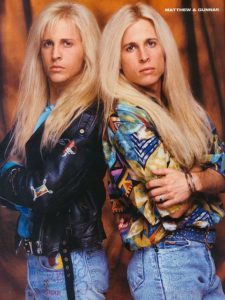
The Nelson Brothers (Ricky Nelson’s twin sons, Matthew and Gunnar). No one seemed to care what their music sounded like.
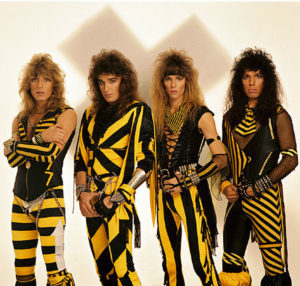
Christian rock band, Stryper. Who in their right mind ever thought bumble bee-colored spandex outfits would be appealing?

Poison. Okay, I’m done.
Confession: Completing all 16 rounds of chemo was one of the toughest accomplishments of my life. It was the only time I ever thought about quitting anything.
Wacky Dream: Our neighbors who live across Marcy Gulch behind the back of our house are having a watch party for the Denver Broncos football team. Their guests are hanging out in their backyard, which we can see from our deck. Oversized stuffed pandas dressed in Denver Broncos gear are hanging from the ceiling of a pergola in their backyard. That night, after all the guests leave, wild animals that live in Marcy Gulch drag the left-over hanging pandas into our backyard to make it look like we stole them.
Interpretation: It’s a set-up!
Confession: Thanks to middle age, I’m transitioning to the person who gets to hear all the stuff people want to say to those who annoy them but are unwilling to say, but it feels good for them to tell me. Huh what?
Before I go, a couple years ago I was interviewed for an independent film by Darla Rae titled Courageous Warriors: Beauty from the Ashes. The documentary explores the obstacles faced by women and men who battle breast cancer. COPE is featured, as are several other organizations founded by women who are featured in the film. On the evening of July 21, supporters of the project will be hosting a fundraiser concert in Denver, with proceeds supporting future marketing efforts and distribution costs for the film. Apparently the entertainment, Premium Diesel, is quite a popular country band. If you would like to attend the concert with Rene and me to support the project, please see below for more info or order tickets at http://tinyurl.com/courageousconcert

June 7, 2021
Second Chances and Reflections on Life in Lockdown
-H. John Putnam
In the grand scheme of things, my life started over on February 11, 2015, the day I was diagnosed with breast cancer. That was the day I declared a reset, a pivot, a switcheroo, a 180. You know, those ceaseless Covid-19 descriptors that remind us we were forever changed.
During lunch on the first day of pandemic lockdown on March 16, 2020—two hours after I drove to the safety of home from the Bye Aerospace office with a passenger seat full of files and my company laptop computer—I told Rene the panic of watching the world shut down was exactly how I felt after receiving the cancer phone call. My gut was gurgling with anxiety, I couldn’t concentrate, and I wondered if the human race would survive the virus, let alone each other.
Here’s what I did in the early days of lockdown to feel better:
Stuffed every available crevice of freezer space with frozen food.Practiced the piano daily because I finally had the time.Listened to Denver’s AM 1430 KEZW radio station so I could hear breakfast club host and everyone’s good friend, Rick Crandall’s daily assurances that everything was going to be okay.Did ten push-ups against the internal staircase rail of our house every time I walked up the stairs from my downstairs office. That got boring, so I attempted to master one-arm push-ups until I agitated the tendonitis in my right shoulder a week before I tripped over our newly-planted garden and sprained my knee. Yes, it’s possible to trip over a garden. I was extraordinarily healthy for the first 45 days of lockdown, then life returned.Made a silly video I titled Rene & Diane’s Excellent Stay-at-home Adventure .Finally watched Tiger King: Murder, Mayhem and Madness on Netflix because, well, everyone was talking about it. I remember thinking, “What the hell did we just watch?”

Flash forward 16 months, and here we are. Digging out and figuring it out. Some are thriving, while others are understandably depressed, afraid, paranoid, and angry. Some say our country wasn’t ready for a pandemic. Well, I wasn’t ready for cancer either, but I hashed out a plan in record time. I had to. Failure was simply not an option.
Where am I at today? I’m at giddy. I got a second chance at living twice in five years. Cancer helped me achieve clarity, but Covid-19 got things exceedingly clear in my head. And in my heart. The cover photo for this post is from 2015, a display in what we call our “piano bar” of all the cards I received during my 10 months of cancer treatment. They were my inspiration, and they helped make sure I kept moving forward.
I see boundless passion and ambition from those who were similarly impacted by the pandemic. Some are launching new career trajectories, others are working on business plans, while many are taking the time and doing the work to heal from emotional scars created by the tragedy. Please keep working! And know there is a world full of individuals—including me—who are rooting for you.
Speaking of emotional scars, the Ray of Hope Colorado Cancer Foundation based in Denver is launching a remarkable therapeutic assistance program to offer financial assistance to individuals who are challenged by the various psychological traumas of cancer. I believe so strongly in what Ray of Hope is offering to those impacted by cancer that I am launching “Diane’s Hope”—a grant match challenge where I will match up to $5,000 to help Coloradoans impacted by cancer receive mental health assistance. If you or someone you know would like to contribute to my grant match challenge, please go to https://rayofhopecolorado.org/dianeshope/. Thank you!
Rene and I have an evergreen tree in our front yard that helps us meet our neighborhood’s HOA’s requirement to have at least two evergreen trees in the front yard of every residence. We live in unincorporated Highlands Ranch, Colorado, which is a “planned community,” not an official city governed by a mayor or some form of city council. Order is maintained by adhering to rules set and enforced by the Highlands Ranch Community Association, and police and fire services are contracted out, which works surprisingly well. One of the newer regulations is the declaration of an official paint color for all residential perimeter wood fences in Highlands Ranch, appropriately called “Highlands Ranch Fence Brown.” I’m not kidding — you can check it out here.
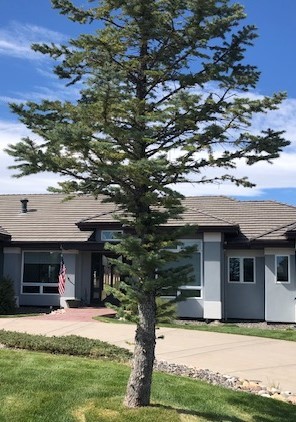
About eight years ago, the evergreen tree I speak of in our front yard started dying from the bottom up. The top half was still healthy and green, so I asked our lawn service to remove the dead limbs from the bottom because I wanted to see if it could be saved. Jon, who owned the lawn service at the time, thought it was an even more outrageous request than unusual coming from me, but he complied. The tree looked silly, but it met the requirements.
Then, a few years ago, pine needles started growing on the stumps of the lower branches. At left is what it looks like today.
Second chances. We all have them right in front of us. Grab one or more and press down as hard as you can on the gas pedal (or accelerator pedal if you drive an electric car). Be like Maggie, the miraculous therapy dog, who beat the odds and survived a horrific situation and now brings hope and comfort to others.
Since I can’t end on a rainbows and unicorns note all the time, Denver’s AM 1430 KEZW radio station switched formats in late January to sports. No more Carpenters songs, no more geezer quiz, no more Colorado by Up with People at 7 a.m. on Fridays. I was sad and melancholy that another staple in my life abruptly came to an end, but I mainly felt bad for Rick Crandall, whose position was eliminated.
I was not surprised, though, when he immediately began reinventing himself and finding even more ways to serve others. Cuz that’s what we do. Rick is resilience at its finest.
By the way, there’s no Highlands Ranch Fence Brown at our house. Nope, our perimeter fence is wrought iron, painted black. I wonder what would happen if we painted it brown?
To making your second chapter even better than the first,



